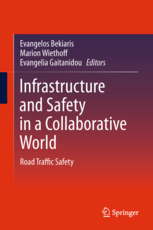
Modelling has become a major part of all aspects in traffic engineering within the last decades. The models applied range from macroscopic models, treating network related facets of traffic, to microscopic models, which represent traffic flow by moving individual vehicles. The safety aspects can be integrated at several levels of modelling, targeting different parts of the driver behaviour. The network effects of safety are typically handled by macroscopic models. They represent the supply, i.e. the road/street network, and the demand, i.e. the trips of people, and match both to create the traffic load on the network links. Microscopic models are applied for all aspects that directly influence the task of driving a vehicle. Generally speaking, driving a vehicle, in this context, means the driver’s control task in lateral and longitudinal direction. This task can be assisted by new Advanced Driver Assistance Systems (ADAS) or In-Vehicle Information Systems (IVIS). In this chapter, first an overview over the models applied within the INSAFETY project is provided, followed by the description of sample applications, which show the potential of the models for safety analyses. Then, possible extensions of the models which would improve them for safety indications are shown and, finally, an outlook onto the future of model applications for safety analyses is given.
| ID | pb7 |
| Full Text | |
| Tags | intelligent systems |













